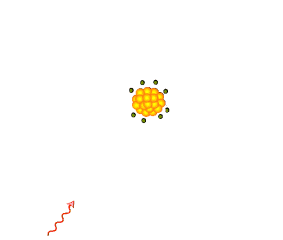[ENG-SPA] "Did you know that bees see the world differently than we do?" // "¿Sabía que las abejas ven el mundo de forma distinta a nosotros?
Hello friends, a big greeting, this time I will share with you a topic not very common for many but interesting, to learn that there are living beings that do not see in the same way that we do, it's very interesting and that's what led me to investigate this topic.
Hola amigos un gran saludo, esta vez les compartire un tema no muy común para muchos pero si interesante, enterarse uno, que existen seres vivos que no ven de la misma forma que nosotros es crioso y fue lo que me llevo a investigar este tema.

Source
Bees are fascinating animals and their ability to see is one of the most interesting features of these insects. Although bees and humans have similar eyes in structure, the way they process visual information is very different.
Las abejas son animales fascinantes y su capacidad de ver es una de las características más interesantes de estos insectos. Aunque las abejas y los humanos tienen ojos similares en su estructura, la forma en que procesan la información visual es muy diferente.
The ability of bees to see the world differently is largely due to their ability to perceive different wavelengths of light than humans.
La capacidad de las abejas para ver el mundo de manera diferente se debe en gran parte a su capacidad para percibir longitudes de onda de luz diferentes a las de los humanos.
While humans can only see light in the visible spectrum, bees can also see light in the ultraviolet. This ability allows them to detect features of flowers that are invisible to us, such as pollen marks and seeds.
Mientras que los humanos solo pueden ver la luz en el espectro visible, las abejas también pueden ver la luz en el ultravioleta. Esta habilidad les permite detectar características de las flores que son invisibles para nosotros, como las marcas de polen y las semillas.

Source
In addition to seeing ultraviolet radiation, bees have more color receptors in their eyes than humans. This allows them to distinguish a wider range of hues, enabling them to perceive features of flowers that we cannot.
Además de ver la radiación ultravioleta, las abejas también tienen más receptores de color en sus ojos que los humanos. Esto les permite distinguir una mayor gama de matices, lo que les permite percibir características de las flores que no podemos distinguir.
These visual capabilities are essential for bees because they need to find and collect nectar from flowers in order to survive. Bees' ability to detect pollen marks allows them to find the flowers that contain the most nectar, while their ability to see a wide range of hues allows them to detect the most inconspicuous flowers.
Estas habilidades visuales son esenciales para las abejas porque necesitan encontrar y recolectar néctar de las flores para sobrevivir. La capacidad de las abejas para detectar marcas de polen les permite encontrar las flores que contienen más néctar, mientras que su capacidad para ver una amplia gama de matices les permite detectar las flores más discretas.

Source
Of course, bees also use their visual abilities to communicate with other bees. They can use sunlight to orient themselves and communicate the location of flowers through dance.
Por supuesto, las abejas también usan sus habilidades visuales para comunicarse con otras abejas. Pueden usar la luz del sol para orientarse y comunicar la ubicación de las flores a través de la danza.
How do bees see colors?
The color range extends from ultraviolet to yellow-orange with peak sensitivity for blue and green ultraviolet.
¿Cómo ven las abejas los colores?
La gama de color se extiende desde el ultravioleta hasta el amarillo- anaranjado con picos de sensibilidad para el ultravioleta azul y verde.

Source
However, bees are blind to the color red, they see red as the absence of color, that is, as black.
Sin embargo, las abejas son ciegas para el color rojo, el rojo lo ve como ausencia de color o sea como negro.
If the environment lacks ultraviolet light, the bees lose interest in collecting resources and remain in the hive until forced by food shortages.
Si el ambiente carece de luz ultravioleta, las abejas pierden interés en recolectar recursos y permanecen en la colmena hasta que se ven obligadas por la escasez de alimentos.
Bees distinguish between white, yellow, blue and ultraviolet colors. According to scientists, they are able to see through flower petals, just as we can see through glass or cellophane. What appears monochromatic to us, bees see in the ultraviolet spectrum and therefore know where the nectar is.
Las abejas distinguen entre los colores blanco, amarillo, azul y ultravioleta. Según los científicos, son capaces de ver a través de los pétalos de las flores, como nosotros podemos ver a través del cristal o el celofán. Lo que nos parece monocromático, las abejas lo ven en el espectro ultravioleta y, por lo tanto, saben dónde está el néctar.

Source

Fuente de información // Source of information:

Thanks for your contribution to the STEMsocial community. Feel free to join us on discord to get to know the rest of us!
Please consider delegating to the @stemsocial account (85% of the curation rewards are returned).
Thanks for including @stemsocial as a beneficiary, which gives you stronger support.